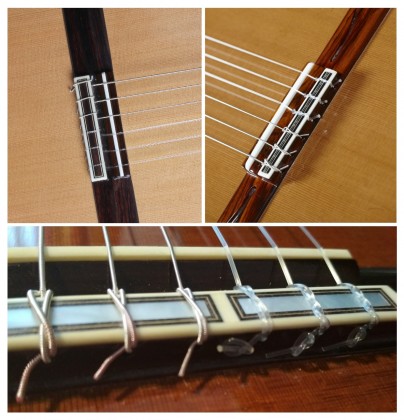How do I put the strings on my guitar?
Changing the strings seems simple but it can create doubts and even problems
In previous publications, we have talked about different types of strings and how important is to get the right choice. Choose the strings that best suit the guitar, the type of music and the way the guitarist plays.
Changing the strings is a ritual performed many times in the guitarist life, but at first, it can be complicated if this process has not been done before.
Putting the strings in the wrong place can lead to negative consequences for the guitar, we must not forget that the tension supported by the guitar is high, depending on the tension of the strings, it can support around 50 or 60 Kg.
Change them progressively
Precisely, the high tension of the strings shows us the first advice: do not change them all at the same time leaving the guitar without strings.
This can be done on some occasions, but the guitar loses tension and requires more time to return to the initial state.
It means that it will take more time to get a stable tuning and you can also notice the guitar different during the process. Establish an order, this could be starting with the sixth, then third, fifth, second, fourth and finally the first.
If you wait for some string gets broken to change them, it is normal that the fourth string breaks first, for this reason and logically, we would begin changing the strings from the broken one.
There are guitarists who keep treble for a long time, therefore they only change the bass because they have greater wear.
Putting the strings
Putting the strings correctly is very important to avoid them to come loose and damage the guitar. If the strings were loose, it would impact directly on the top, right next to the bridge
To ensure the stability of the string it is very important the string is pressed on the side of the bridge, right next to the hole.
To perform the "cordage" we will distinguish between putting the bass and putting the treble.
Putting the bass is the simplest. The string is passed behind itself and it is passed again between the string and the bridge. Be careful, the end has to be pressing the same string just next to where the hole is, the area of greatest contact.
Two options to put the trebles
For the treble, we can use two different techniques.
The most traditional technique is to give two or three rounds to the string so the string gets more pressure points between the string and the bridge. This allows more string anchoring points.
Another way to put the trebles is to make a small knot at the end and put the string in the same way as with the bass.
This knot would stop in case there was sliding.
On some occasions, you could have seen burn the end of the string. The problem is that when the string is burned, it weakens at the joint between the string and the "end" that is generated. For this reason, if the string slipped, it could break through the union and release the string.
If the strings have small caliber, as with the carbon strings, in addition to making the knot, you can give it a spin for greater safety.
12-hole bridges
In recent years, the twelve-hole bridge has been increasingly used. It is a bridge where the strings are easier to put because the double hole makes the string is held by itself.
In Alhambra Guitars we can find some models with this system like the 10 Premier model and the Premier Pro Exotic model.



